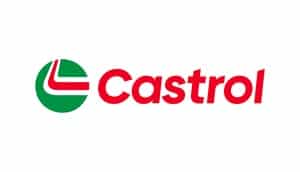Castrol Transaqua HT2-N


Castrol Transaqua HT2-N Water-Based Subsea Production Control Fluid
Castrol Transaqua HT2-N is a water-based hydraulic control fluid specially formulated for use as the control medium in surface and subsea production control system in the Norwegian sector of the North Sea. The fluid incorporates all the features required for operation in a wide range of equipment, and can therefore be used as the operating medium throughout the control system including subsurface safety valve and well control areas.
Castrol Transaqua HT2-N has been developed and qualified under a Quality Management System with ISO 9001:2000 certification and an Environmental Management System with ISO 14001:2004 certification for Research and Development.
- Castrol Transaqua HT2-N is designed specifically for use in all conventional and high-pressure, high-temperature applications.
- Can operate over a temperature range of -30ºC (-22ºF) to 170ºC (338ºF).
- Track record of use in subsea production control systems at temperatures up to 170°C (338°F)
- Castrol Transaqua HT2-N is tolerant of the high well temperatures encountered by those parts of the control system located at the well bore.
- The low pour point also allows use in areas where low ambient temperatures prevail.
- Designed for use within Electro-Hydraulic Multiplex (EH-Mux) or direct hydraulic control systems.
- Designed for reliable use throughout the entire production and workover control system, covering Topsides and Subsea applications: both open water and wellbore; and Downhole from the control of a single SSSV through to complex intelligent well completions.
Castrol Transaqua HT2-N Water-Based Subsea Production Control Fluid Product Advantages:
- Fully compliant with OSPAR environmental legislation.
- Castrol Transaqua HT2-N has an identical formulation to the field-proven Castrol Transaqua HT2 but with the UV
tracer and anti-foaming additives removed. - Essentially identical performance to Castrol Transaqua HT and Castrol Transaqua HT2 with an operating
capability up to 180°C (356°F). See Table 1 & Table 2 for detailed physical and performance characteristics. - Castrol Transaqua HT2-N contains a yellow metal passivator.
- Castrol Transaqua HT2-N is fully compatible and miscible in all proportions with the Castrol Transaqua range and
most other water-based subsea control fluids. - As with all glycol-based control fluids, Castrol Transaqua HT2-N must never be mixed with control fluids of
different base types such as synthetic fluids (e.g. Castrol Brayco Micronic SV/3) or mineral oils (such as the - Castrol Hyspin range). Contamination of Castrol Transaqua HT2-N by either of these types of products can
seriously affect product performance. - Castrol Transaqua HT2-N is resistant to bacterial and fungal growth.
- Castrol Transaqua HT2-N is stable with seawater contamination.
- Castrol Transaqua HT2-N is compatible with a wide range of materials commonly used in subsea control
systems, for basic lists see Table 3 & Table 4. - Proven track record of Castrol Transaqua series chemistry.
- Allows reliable operation of subsea equipment exposed to conventional or HP/HT conditions.
- Compatibility and miscibility properties of Castrol Transaqua HT2-N with other water-based control fluids allow
for an easily managed direct top-up and upgrade option programme. For further details contact Castrol Offshore. - The chemistry of the fluid allows operation at low ambient temperature environments and inhibits hydrate
formation
Metals to be avoided
The following metals are best avoided with all glycol water-based fluids: Aluminium, Cadmium, Magnesium and Zinc. For coasting compatibility date please contact Castrol Offshore.
Seal Materials to be Avoided
Rubber Impregnated Fabric Composites are not compatible with Castrol Transaqua HT2-N. These materials must be changed out from equipment to be used with Castrol Transaqua HT2-N.
Painted and other Surface Coatings
It is recommended that in accordance with good working practice the internal surface of the hydraulic system should not be coated. However, external surfaces may require coating and as with all control fluids conventional paint systems will tend to soften or strip. It is therefore recommended that these be replaced by cured epoxy, nylon, or phenolic types as commonly used subsea. Surface preparation prior to paint application is critical.
Where it is necessary to use internal surface coatings such as PTFE these should be assessed for suitability of use. Manufacturers’ guidelines should be observed concerning cure times and temperatures and as with paint systems surface preparation specifications should be adhered to.
Environmental Compliance
While Castrol Transaqua HT2-N is compliant with OSPAR legislation providing a large global footprint and meets Australian local species toxicity requirements, it is specifically designed for Norwegian legislative requirements for surface and subsea operations.
Product Supply
Our products are available worldwide through our global sales and logistics network, with stocks held in all strategic offshore supply locations. All our subsea products are supplied in 208 litre (55 US gallon) plastic drums as well as bulk containers and small packs; for details of specific packaging availability in your location contact your local Castrol Offshore sales office.
All packages should be stored under cover. Where outside storage is unavoidable drums should be laid horizontally to prevent the possible ingress of water and obliteration of drum markings. The product should not be stored above 60°C, or exposed to hot sun or freezing conditions.

Request a quote for this product
"*" indicates required fields